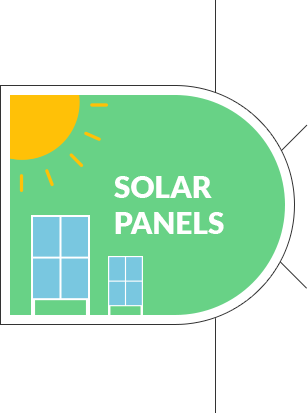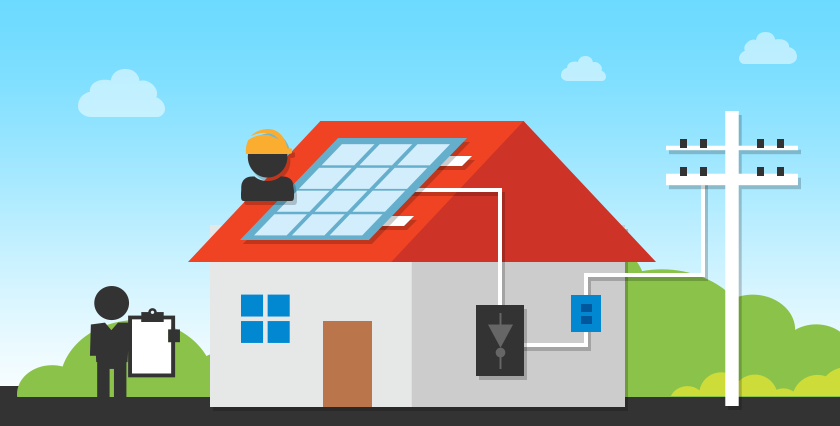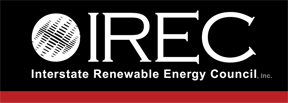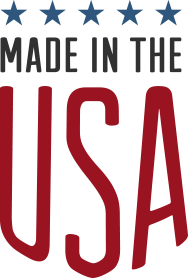QUIZ: Test Your Solar Pricing Prowess
Getting a solar array isn’t cheap. What percentage of the total cost of an installed solar array comes specifically from the solar panels?
-
A.
Less than 30 percentCongratulations! You know your solar costs. Read on to learn even more.
-
B.
30-60 percentSurprisingly, solar panels are only about one-third of the cost of installing a solar system. Get all the facts on solar costs before making the clean energy plunge.
-
C.
More than 60 percentThere’s a lot more that goes into a solar system than you might think. Read on to see why panels are less than one-third of the total solar cost.
Here’s where the current cost breakdown on a solar panel stands:

- Other (Operational costs like monitoring, permits, connection fees, etc.): 47 percent
- Solar Panels: 17 percent
- Inverter: 4 percent
- Installation: 10 percent
- BOS (Balance of System: mounts, wiring, electrical components): 11 percent
The Bottom Line: Solar Costs Coming Down
While solar sounds like a great idea to many homeowners – a way to trim electric bills while reducing their carbon footprint – the first question is always the same: “How much do solar panels cost?” It’s an important question, but the better question is, “How much will solar cost for my home?”
A solar installation on your roof or in your yard costs more than just the solar panels. In addition to the modules themselves, other hardware components, labor, and permits have to be considered. Fortunately, the cost of installing residential solar projects has dropped dramatically in recent years.
In 2000, solar installations were expensive and people were mostly environmentally motivated. Now, homeowners are financially motivated.
Homeowners are smart to go into the process armed with information about what to expect at each stage of the installation. Here’s a look at the cost of installing solar panels.
Price Per Solar Panel: Watts, Efficiency, Warranty
Solar panels typically make up 25 to 30 percent of the total price of installing a solar system. The cost varies based on the type and efficiency. In general, however, the type of panels used in residential installations is standard, so overall costs will vary based on the scope of the project rather than individual panels.
According to the Solar Energy Industries Association, the cost of solar panels has dropped dramatically in the past 10 years. Whereas in 2010, an average-sized residential system came with a pre-incentive price-tag of $40,000, in 2019, it’s roughly $18,000.
The total average pricing for residential systems is just above $3.50 per watt. Here are some of the factors in understanding the cost of a solar panel:
Solar modules are sold based on how many “watts” of energy they generate. A watt is the basic unit of power, which equals volts multiplied by amps. Each module contains solar cells, so the more cells that can be packed into a module, the higher the total wattage. The lower-wattage modules are packed with fewer solar cells, so they are relatively inexpensive. Those with a greater density, such as the 300- or 370-watt units, cost more. Module prices average about $.60 per watt, with costs projected to fall to $.46 per watt by 2018, according to a 2015 U.S. Department of Energy SunShot report on pricing trends.

The efficiency rating of a solar module is the percentage of sunlight that is converted into electric energy. The average efficiency rating is between 14 to 18 percent. As technology improves, higher percentages will result. A cell’s efficiency comes from the type of silicon that is used. Learn more about the types of solar panels here and about efficiency here.
The size of a solar system significantly determines its overall cost. Most residential photovoltaic installations are between 2 and 20 kW and cost between $15,000 and $35,000, according to the Clean Energy States Alliance. However, many variables are at work, including the available space and aspect of the roof. Some systems need as much as 1,000 square feet while small starter systems might require about 50 square feet. A bigger array does not necessarily mean more wattage.
Manufacturer warranties are typically offered on the individual solar components. Most name-brand solar panels will include a 20- to 25-year warranty that covers at least 80 percent of the power output. A parts-and-labor warranty for the entire system will typically cover two years and will differ from state to state. The materials that make up solar panels generally don’t break down over time and so they should last at least 30 years, although they will lose a small percent of efficiency each year.
System Costs: Inverter, Installation, Permits
Solar panels are just one piece of the pricing puzzle. Inverters, racking, sales taxes and permitting fees are just a few of the costs that really boost the cost of going solar.
Here is a more detailed look at the additional costs in going solar:

Source:National Renewable Energy Laboratory
Check out our in-depth look at Solar Panels
Learn all about solar system mounting systems
Installation
Labor costs vary from region to region, but total labor costs run about $0.27 per watt and can be 10 to 25 percent of the total system costs. Labor costs include electrician and non-electrician installation labor.
For a standard 3 kW system of about 20 solar panels, the average installation time is 75 man-hours, Caldwell said. She typically plans on two or three workers over three days to complete installations.
About two-thirds of the labor is electrician installation labor; the rest is non-electrician labor. The complexity of the system’s design and location of the modules can make a difference in the labor cost.
Although it is possible for a handyman or do-it-yourselfer to install a solar system, it is not practical, said Caldwell.
I haven’t seen it be that effective. Solar is a completely different animal for electricians.
Many states require a NABCEP-certified electrician to install a solar system. Find out if your state has such a requirement at the International Renewable Energy Council website.

Inverter
Solar panels cannot create useable AC power on their own. They need inverters to convert the DC energy into AC electricity that can be used in U.S. homes. Prices on inverters have steadily declined, and consumers can expect to pay between $1,500 and $3,000. Generally, there are three types of inverters for solar installations:
Most U.S. residential solar installations use central inverters, which are the least costly. The downfall of central inverters is that any shading decreases the power output of the entire string. Central inverters’ warranties are typically 10 to 15 years.
Microinverters and power optimizers, known collectively as Module-Level Power Electronics, are gaining in popularity. MLPE modules are more expensive, but they can be used in more designs. Microinverters are installed on each panel instead of at a central location. They tend to last longer and come with a 20 to 25-year warranty.
Power optimizers are a middle ground between central inverters and microinverters, and their price reflects that – they’re less expensive than microinverters but do boost efficiency.
BOS (Balance of System)
Balance of System includes wiring and conduits, safety disconnects, grounding equipment, surge protection, meters, and instrumentation.
According to NREL, in 2018 both electrical and structural BOS are about $0.31 per watt.
BOS costs can make up about 11 percent of the total installation costs. Homeowners can expect to pay $2,000 to $10,000 for BOS components with a 10-year warranty.
Other
Once the “hard costs” of the solar modules, inverters, and racks are priced, there are still additional “soft costs” for a solar installation, including a fee to connect to the power grid and sales tax.
Even before permit applications can be submitted, a site assessment – including the design and electrical layout – must be prepared by engineers. The permits themselves range from a page or two to a beastly 16-page application.
A range of solar permit fees can be found across states. In Colorado, a typical fee is $498. Minnesota finds an average of $308, including three cities that charge no fee at all. Generally, homeowners can expect to pay less than $500.
The Sierra Club, IREC and the Vote Solar Initiative are working to standardize permitting fees for homeowners by encouraging municipalities to impose a flat fee of $400 or less.
Once a system is up and running, regular monitoring is necessary to ensure performance. Many inverters include a monitor and most manufacturers also offer data-monitoring software that runs on a PC. More sophisticated monitoring systems, which can include alerts for discrepancies in energy outputs, can cost from $400 to $1,300.
Installer Soft Costs
As with any business, there are many behind-the-scenes costs. Customer acquisition, administration, and overhead are all supported by every solar system sold. And let’s not forget the installation company needs a profit margin as well.

American-Made Vs. Foreign: Does It Matter?
When considering solar panels, buying American-made can be a challenge. China is the overwhelming leader in solar panel manufacturing, although panels are also made in the United States, Korea, Germany, and Japan.
About 5 to 10 percent of customers ask for American-made solar panels, IPC’s Caldwell said.
“Most of the people we deal with want a good product,” she said. Because the panels are key to the whole project, she said, “I wouldn’t recommend that they shop for cheap panels.”
IPC generally uses solar panels made by Canadian Solar and Solar World, whose panels in particular Caldwell calls “a nice choice.”
Solar panels made in the United States typically cost 80 cents to $1 per watt, which is 10 to 30 cents more per watt than imported panels. Premium panels can cost up to $1.25 per watt. The price gap has narrowed in recent years, partly because of U.S. Commerce Department tariffs on certain imports by China and Taiwan. The tariffs are a result of artificially low prices by China based on China’s government-subsidized solar factories.
The difference in price is not necessarily from cheaper goods – although Caldwell pointed out, it can be, so be cautious – but from China’s scale and supply-chain development as well as government subsidies.
In addition, deciding whether a panel is “American-made” can be complicated. Many multinational companies have U.S. headquarters and also manufacture in the United States. For instance, Solar World is headquartered in Germany, but builds solar panels in the United States, so most installers consider them American-made.
Of the U.S.-headquartered solar companies, 90 percent of the manufacturing is done outside of the United States, according to a report by the National Renewable Energy Laboratory and Massachusetts Institute of Technology.
Here’s a look at some U.S. solar panel manufacturers:
- 1SolTech: Established 2008. Headquarters and manufacturing in Farmers Branch, Texas.
- Auxin Solar: Established 2008. Headquarters and solar panel factory in San Jose, California.
- Itek: Established 2009. Headquarters and manufacturing in Bellingham, Washington. Serves Washington, Oregon, Idaho and Minnesota.
- Suniva: Established 2008. Headquarters in Norcross, Georgia; manufacturing in Georgia and Michigan.
- SunPower: Established 1985. Headquarters in San Jose, California. Manufacturing in both United States and Philippines.
- REC Solar: Established 1996. Headquarters in San Luis Obispos, California. Manufacturing in Singapore.
- Solar World: Established 1988. Headquarters in Germany; Manufacturing in Eugene, Oregon, and Germany.
- Sharp Solar: Established 1959. Headquarters in Japan; manufacturing plant in Memphis, Tennessee.
- Kyocera Solar: Established 1971. Headquarters in Scottsdale, Arizona. Manufacturing in California and Mexico.



